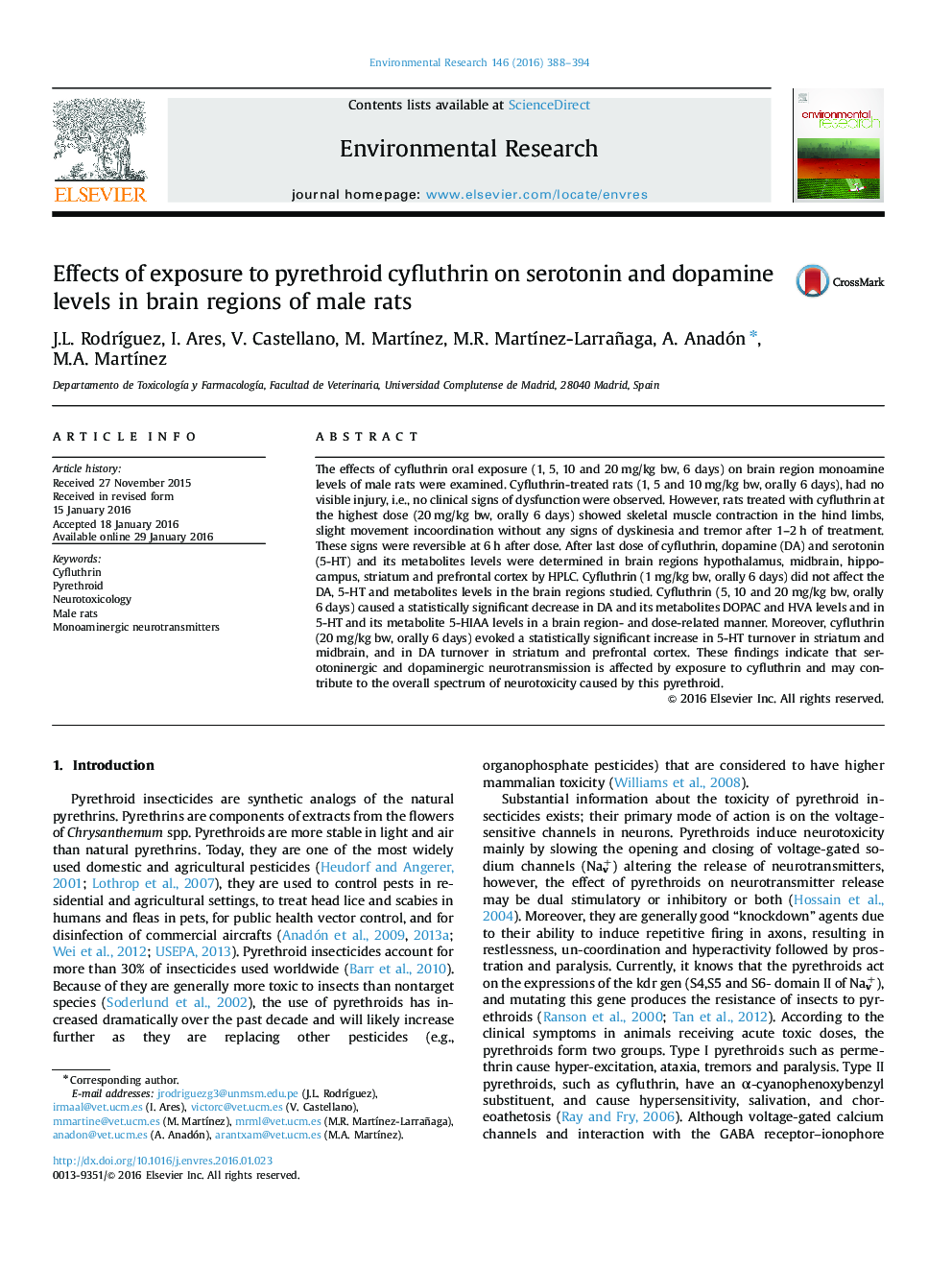| Article ID | Journal | Published Year | Pages | File Type |
|---|---|---|---|---|
| 6352177 | Environmental Research | 2016 | 7 Pages |
Abstract
The effects of cyfluthrin oral exposure (1, 5, 10 and 20Â mg/kg bw, 6 days) on brain region monoamine levels of male rats were examined. Cyfluthrin-treated rats (1, 5 and 10Â mg/kg bw, orally 6 days), had no visible injury, i.e., no clinical signs of dysfunction were observed. However, rats treated with cyfluthrin at the highest dose (20Â mg/kg bw, orally 6 days) showed skeletal muscle contraction in the hind limbs, slight movement incoordination without any signs of dyskinesia and tremor after 1-2Â h of treatment. These signs were reversible at 6Â h after dose. After last dose of cyfluthrin, dopamine (DA) and serotonin (5-HT) and its metabolites levels were determined in brain regions hypothalamus, midbrain, hippocampus, striatum and prefrontal cortex by HPLC. Cyfluthrin (1Â mg/kg bw, orally 6 days) did not affect the DA, 5-HT and metabolites levels in the brain regions studied. Cyfluthrin (5, 10 and 20Â mg/kg bw, orally 6 days) caused a statistically significant decrease in DA and its metabolites DOPAC and HVA levels and in 5-HT and its metabolite 5-HIAA levels in a brain region- and dose-related manner. Moreover, cyfluthrin (20Â mg/kg bw, orally 6 days) evoked a statistically significant increase in 5-HT turnover in striatum and midbrain, and in DA turnover in striatum and prefrontal cortex. These findings indicate that serotoninergic and dopaminergic neurotransmission is affected by exposure to cyfluthrin and may contribute to the overall spectrum of neurotoxicity caused by this pyrethroid.
Related Topics
Life Sciences
Environmental Science
Health, Toxicology and Mutagenesis
Authors
J.L. RodrÃguez, I. Ares, V. Castellano, M. MartÃnez, M.R. MartÃnez-Larrañaga, A. Anadón, M.A. MartÃnez,
